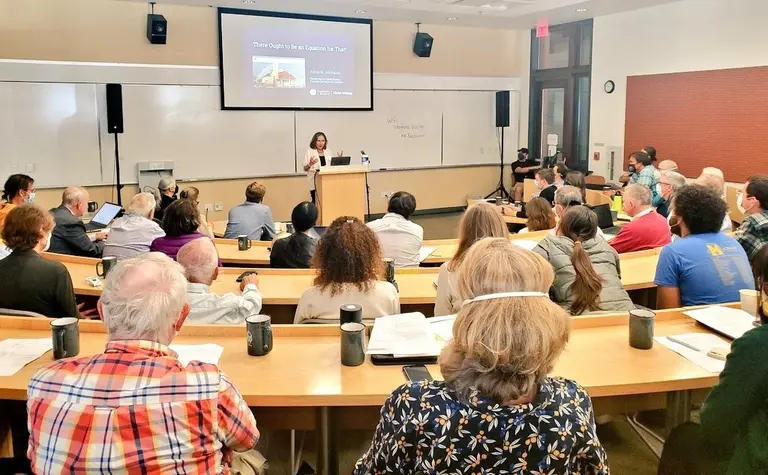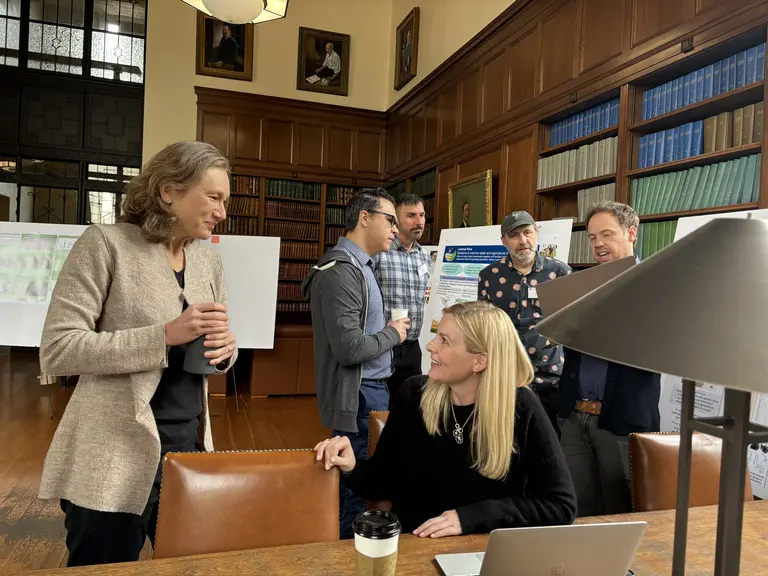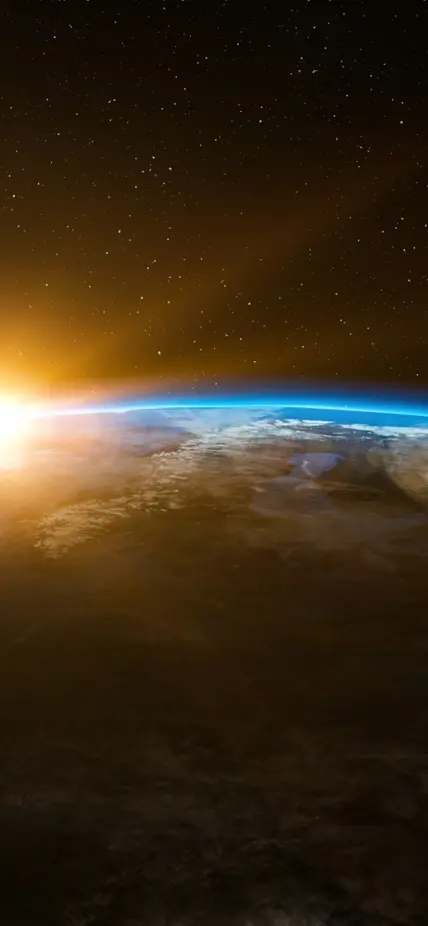
Anna Michalak emerged from the COVID-19 pandemic with a renewed sense of urgency about the pace at which academia can provide useful, science-based climate solutions to policymakers, industry, and non-governmental institutions.
She gave a fiery call-to-action presentation at a long-term colleague’s retirement symposium, enrolled in a global leadership program at the Stanford School of Business, and made major inroads in the corporate and non-profit worlds—quickly developing collaborations with Google Research and Schmidt Sciences.
“I spent a lot of time thinking about what is limiting the pace of change in the research community and investigating the parallel challenges that are occurring in other sectors,” she explains. “There is tremendous benefit to scientists in revealing how the Earth System functions. But at the same time, we need to learn how to accelerate our impact on practical solutions, planning and policy if we want to ensure that we have a big enough seat at the table.”
On the flip side, Michalak adds, many companies and nonprofit organizations want to put their resources toward climate action but aren’t sure how to select the right problems to focus on or the right scientific advisors to improve their chances of success.
“Whether it’s Schmidt Sciences’ commitment to invest hundreds of millions of dollars into funding climate programs or a small startup’s desire to incorporate sustainability into their business plan, I want to work at these interfaces between different kinds of organizations that share common goals, so that we can all get to solutions much faster,” Michalak emphasizes.
That’s part of why she founded the Carnegie Science Climate and Resilience Hub—to help facilitate relationships between organizations that need scientific guidance and researchers who want to see their work drive climate and sustainability outcomes more quickly.
Publicly launched on Earth Day in April, this new umbrella organization within Carnegie Science brings together researchers from across all three of our scientific divisions, representing a broad range of technical and scientific expertise that is critical for tackling challenges in climate, resilience, and sustainability.

More than a third of Carnegie Science’s principal investigators, across disciplines as varied as aquatic ecology, climate science, volcanology, exoplanet research, astrophysics, and telescope engineering have already joined the Hub and are lending their time and knowledge to its mission.
“Two of the main things that I can provide in these contexts are lending my accumulated scientific knowledge base and my mental Rolodex of researchers working in climate, sustainability, and resilience to helping partner organizations understand where they can best have impact and who has the right collaborative style to help them achieve their goals,” Michalak says. “It’s not always clear on paper who is really poised for success, and the Hub can play a matchmaking role that will help everyone.”
Additionally, Hub members have identified some early areas of focus that are well matched to the breadth of their expertise, including: studying volcanic activity as a window into both atmospheric climate processes and ecosystem resilience in the oceans; developing approaches for more deeply integrating computational modeling with data from multiple field sites at scales spanning from genomes to ecosystems; and expanding our understanding of resilience in the context of climate and sustainability by viewing it from perspectives as diverse as food, water, energy, infrastructure, adaptation, geohazards, and early warning systems.
Get in Touch!
If you are interested in learning more about the work that that we are doing or would like to discuss opportunities to collaborate, please reach out to us.
Email the HubIf you are interested in donating to support the Carnegie Science Climate and Resilience Hub, please reach out to Senior Development Officer James Morse.
Email James MorseMichalak’s approach is a result of her multi-decade experience in the field, which enables her to more effectively cross boundaries and interface with different perspectives.
“The way that I do science as an individual has evolved as my career has progressed,” she notes. “I love to write great papers; I love to have great postdocs; at the same time though, I’ve increasingly come to realize that what I can most uniquely offer at this point is this 10,000-foot view.”

She discusses how she’s grown comfortable evaluating her ability to make a substantive difference to a project and in pursuing—and declining—opportunities accordingly.
“When I explore a new collaboration, one of the factors that I look for is whether I am genuinely different from the other people in the room in terms of experience and expertise. If so, then it’s usually a sign that it’s a good thing for me to participate in,” she says.
This is what brought her to her collaboration with Google and what convinced her to deepen her work with Schmidt Sciences as part of the advisory boards that will guide their Virtual Institute for the Carbon Cycle and Virtual Institute for Earth’s Water.
She is also the deputy principal investigator, with long-time collaborator Christian Frankenberg of Caltech, on a proposed NASA mission called the Carbon Investigation, or Carbon-I. The mission concept was just selected as a finalist as part of NASA’s Earth System Explorer program. If selected by the space agency next year, it would enable higher-than-ever resolution maps of global carbon dioxide and methane, making it possible to constrain human emissions with the precision and accuracy needed to inform climate actions. It would also shed light on regions such as the tropics, where persistent cloud cover has hidden the role of natural systems such as wetlands from previous space-based missions.
Since Carnegie Science announced last summer it’s new partnership with Caltech—strengthening a historic partner in astronomy to develop bold new directions in life and environmental science research—Michalak’s partnership with Frankenberg advances organizational goals as well as personal ones.
“One of the ways in which Carnegie Science stands out from other institutions is that we give our scientists the freedom and ability to interact just as easily with non-traditional collaborators as they do with traditional partners,” Michalak muses. “For generations, Carnegie has believed that if you hire the absolute best people and you trust them, then great science will emerge.”

She says the relationship-building aspects of her current role are incredibly motivating to her right now—driving excitement about the breakthroughs hovering just over the horizon.
“I feel very strongly that if you’re going to create a community, you can’t come in with your own ideas fully baked from the start,” she concludes. “You have to be ready to accept a push into a new way of thinking.”

